There is no beauty without some weirdness. Believe it or not, among the world’s most beautiful blossoms, there are those that may be deemed odd.
Some flowers, on the other hand, are so rare and secretive that they are regarded as botanical treasures.
We’ve produced a list of the top ten weirdest flowers out of thousands, and we hope you enjoy it!
1: Juliet Rose
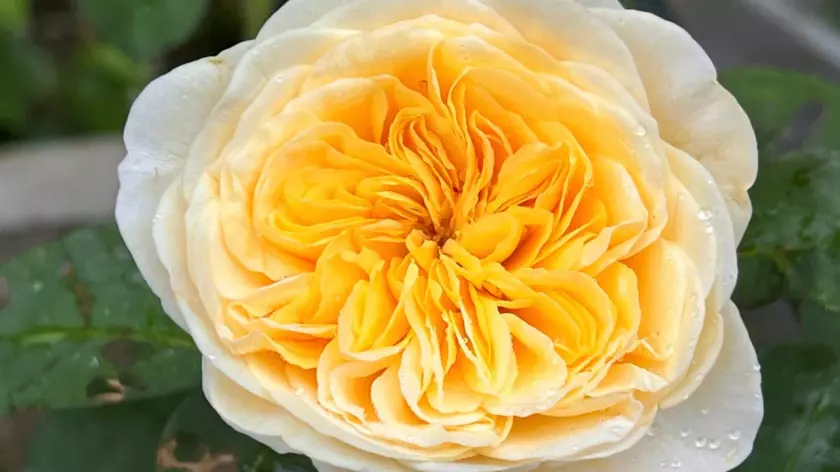
The Juliet Rose is a highly acclaimed hybrid tea rose renowned for its exquisite beauty and captivating fragrance. With its large, cup-shaped blooms, this rose variety showcases an enchanting blend of peachy-pink petals that gradually unfold into a resplendent rosette shape. The outer petals, slightly darker in tone, add a touch of contrast to the overall appearance.
What sets the Juliet Rose apart is its intense and delightful fragrance. Emitting a strong, sweet scent with hints of ripe apricot and fruity undertones, it fills the air with a captivating aroma that truly enhances any space.
Not only is the Juliet Rose visually stunning and aromatic, but it also boasts good disease resistance, making it a reliable choice for rose enthusiasts. Its well-branched bushes, reaching a height of 3-4 feet, feature dark green foliage that beautifully complements the breathtaking blooms.
This versatile rose finds purpose in various settings. Its gorgeous flowers make it a popular selection for cut arrangements, bouquets, and floral displays, bringing elegance and charm to any occasion. Whether planted in flower beds, borders, or containers, the Juliet Rose elevates the aesthetic appeal of gardens and outdoor spaces.
Recognized as the “Rose of the Year” in 2006 by the British Association of Rose Breeders, the Juliet Rose has rightfully earned its place among the most beloved and revered rose varieties worldwide. Its beauty, fragrance, and overall allure make it a captivating choice for anyone seeking to indulge in the splendor of roses.
2: Flying Duck Orchid
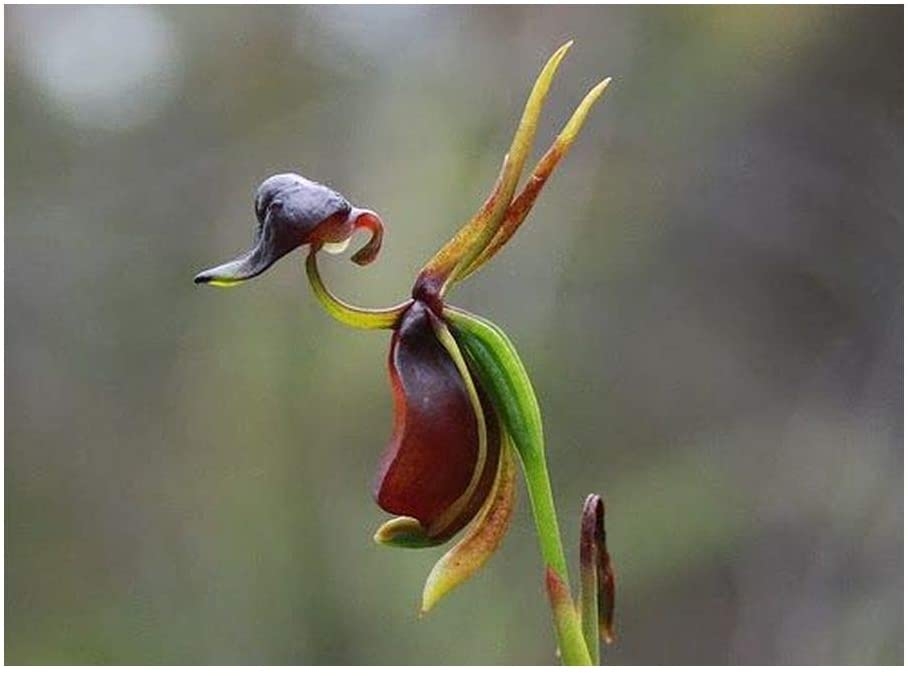
The Flying Duck Orchid, also known as Caleana major, is a fascinating and unique orchid species native to Australia. Its distinctive flowers resemble small ducks in flight, which gives this orchid its charming and whimsical appeal.
The flowers of the Flying Duck Orchid are truly remarkable. Each blossom features a prominent, elongated lip that resembles the body and beak of a duck. The lip is usually a vibrant reddish-brown color, while the rest of the flower may be green or brown with intricate markings. The overall shape and coloration mimic the appearance of a flying duck, hence its common name.
This orchid species is known for its intricate pollination strategy. The lip of the flower contains a specialized structure that mimics a female wasp, attracting male sawflies. When a male sawfly tries to mate with the flower, it inadvertently picks up or deposits pollen, aiding in the orchid’s reproduction.
The Flying Duck Orchid primarily grows in sandy or gravelly soils in bushland areas of Australia. It blooms during the spring and summer months, and its flowers can be found growing on tall, slender stems.
Due to its unique and visually striking appearance, the Flying Duck Orchid has become a popular subject for nature enthusiasts, photographers, and botanical enthusiasts. Its ability to mimic a flying duck is a testament to the incredible diversity and ingenuity found in the world of orchids.
3: Rafflesia Flower

The Rafflesia flower is an extraordinary and rare plant known for producing the largest single flower in the world. Found in Southeast Asia, particularly in the rainforests of Indonesia and Malaysia, this remarkable flower is both fascinating and captivating. The Rafflesia lacks leaves, stems, and roots, and instead, it emerges as a massive, fleshy, and pungent blossom. With its unique and impressive appearance, the Rafflesia flower has become a symbol of intrigue and wonder. Its blooming process is short-lived, lasting only a few days, making it a truly remarkable sight for those fortunate enough to witness it in person.
4: Hydnora africana
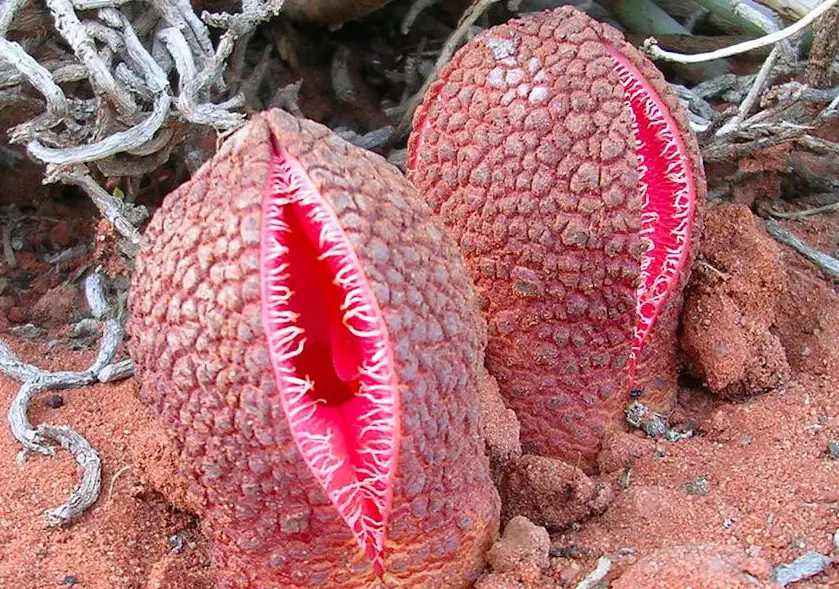
Hydnora africana is an intriguing and unusual parasitic plant native to southern Africa. This peculiar plant spends most of its life underground, with only its fleshy, red or brown flower emerging above the surface. The flower of Hydnora africana has a peculiar shape, resembling a bizarre, alien-like mouth. It emits a foul odor to attract its primary pollinators, carrion beetles and dung beetles. These insects enter the flower seeking food and inadvertently assist in pollination. Hydnora africana is a fascinating example of the diverse and unique adaptations found in the plant kingdom, thriving in its underground existence and relying on unconventional means for reproduction.
5: Naked Man Orchid
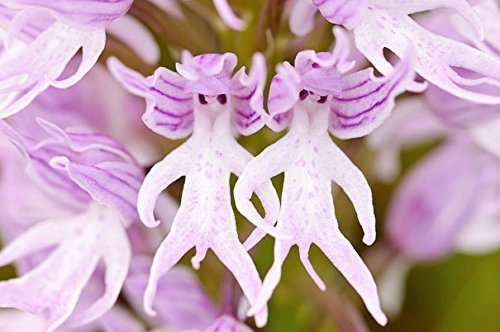
The Naked Man Orchid, scientifically known as Orchis italica, is a captivating and amusing orchid species native to the Mediterranean region. True to its name, the flower of this orchid resembles a miniature naked man, complete with a head, arms, and legs. The vibrant pink or purple petals form the “body” while the sepals and lip create the impression of “limbs.” This unique and whimsical appearance has made the Naked Man Orchid a favorite among nature enthusiasts and photographers. Though small in size, it leaves a lasting impression, showcasing the incredible diversity and artistry found in the world of orchids.
6: Peacock cactus

The Peacock Cactus, scientifically known as Selenicereus chrysocardium, is a stunning and distinctive cactus species that captivates with its exquisite beauty. Native to tropical regions of Central and South America, this epiphytic cactus is named after the resemblance of its vibrant green stems to the iridescent plumage of a peacock. The stems feature intricate patterns of wavy ridges and are adorned with golden spines. In addition to its striking appearance, the Peacock Cactus produces large, fragrant flowers that bloom at night, adding to its allure. This unique cactus species is a prized ornamental plant, cherished for its remarkable aesthetics and tropical charm.
7: Protea Pinwheel

The Protea Pinwheel, scientifically known as Leucospermum cordifolium, is a breathtaking flowering shrub native to South Africa. This striking plant showcases vibrant, cone-shaped flower heads composed of tightly packed, elongated bracts in various shades of red, orange, and yellow. The bracts resemble pinwheels, giving the plant its enchanting name. The Protea Pinwheel is known for its remarkable resilience, withstanding harsh conditions and thriving in well-drained soils. It attracts attention with its unique and flamboyant blooms, making it a popular choice in gardens, floral arrangements, and bouquets. The Protea Pinwheel embodies the natural beauty and diversity found in the Protea family, captivating all who encounter it.
8: Palicourea Elata Flower
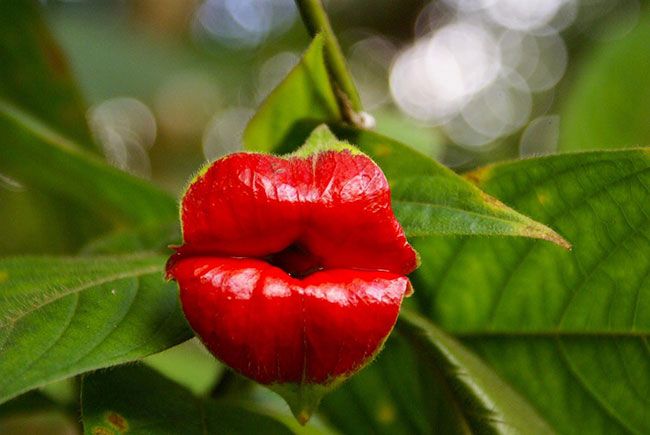
The Palicourea elata flower, also known as the “Dancing Lady” or “Rainbow Bush,” is a captivating flowering plant found in the rainforests of Central and South America. Known for its vibrant and showy display, this flower features clusters of small, tubular blossoms that range in color from bright orange to deep red. The flowers are arranged in an upward-facing manner, resembling a graceful dancer in mid-motion. The Palicourea elata flower not only adds a splash of color to its natural habitat but also attracts various pollinators with its nectar-rich blooms. Its beauty and unique form make it a delightful sight for nature lovers and botanical enthusiasts alike.
9: Subterranean Plant
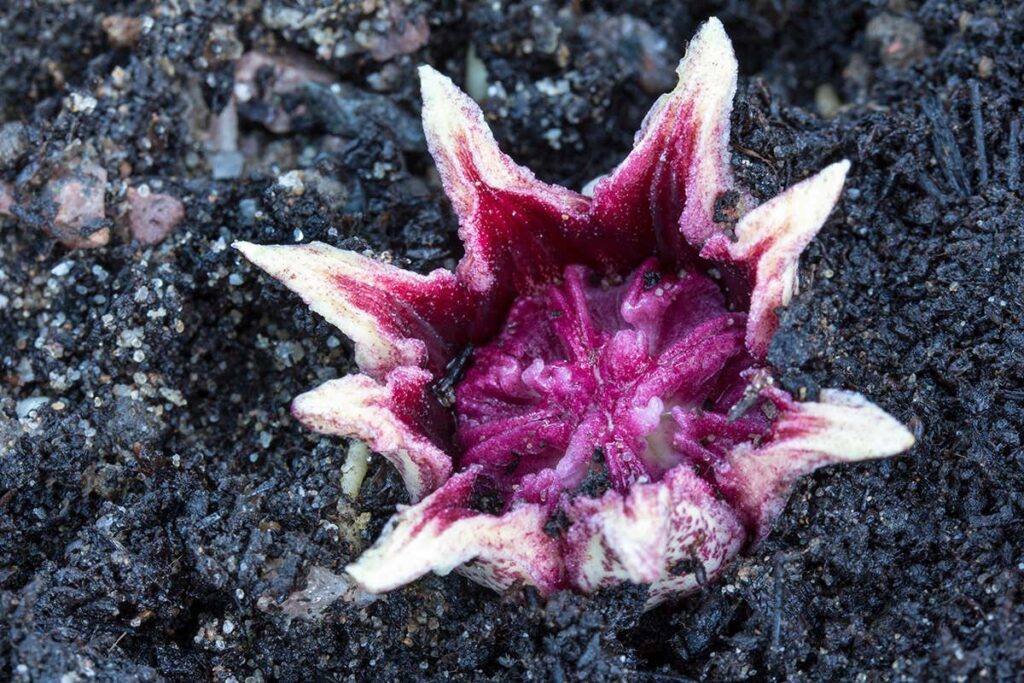
A subterranean plant, as the name suggests, is a fascinating type of plant that spends the majority of its life cycle underground. These plants have adapted to survive in dark and often harsh conditions beneath the soil surface. They lack the traditional above-ground structures such as leaves or stems, instead relying on specialized structures like rhizomes, bulbs, or tubers to store nutrients. Some examples of subterranean plants include truffles, which grow underground and form symbiotic relationships with tree roots, and various species of orchids that have evolved to thrive in the subterranean environment. These plants demonstrate the remarkable adaptability and diversity of plant life in different ecological niches.
10: Amorphophallus Flower

The Amorphophallus flower, also known as the “corpse flower” or “titan arum,” is a truly remarkable and unique plant species. Native to tropical regions of Asia, this flower is renowned for its extraordinary size and distinctive odor. The Amorphophallus flower boasts one of the largest inflorescences in the world, reaching heights of up to 10 feet (3 meters). When in bloom, it emits a foul scent resembling rotting flesh, attracting pollinators like carrion beetles and flies. This captivating combination of impressive size and unpleasant odor has made the Amorphophallus flower a subject of curiosity and wonder among botanists and enthusiasts alike.


